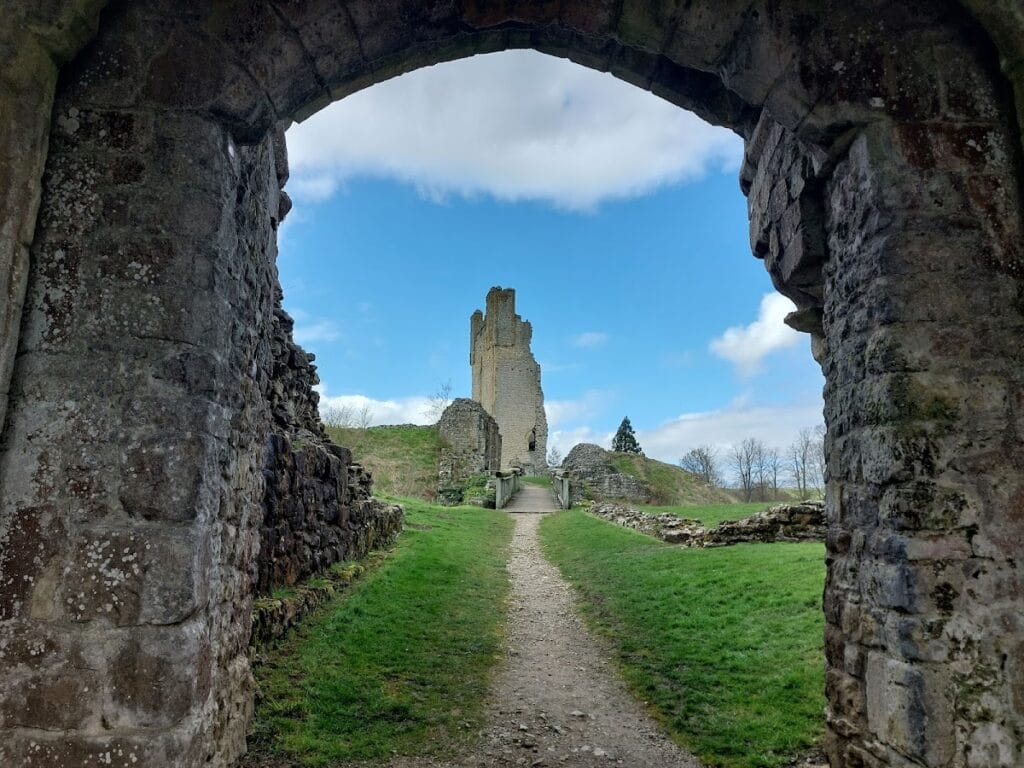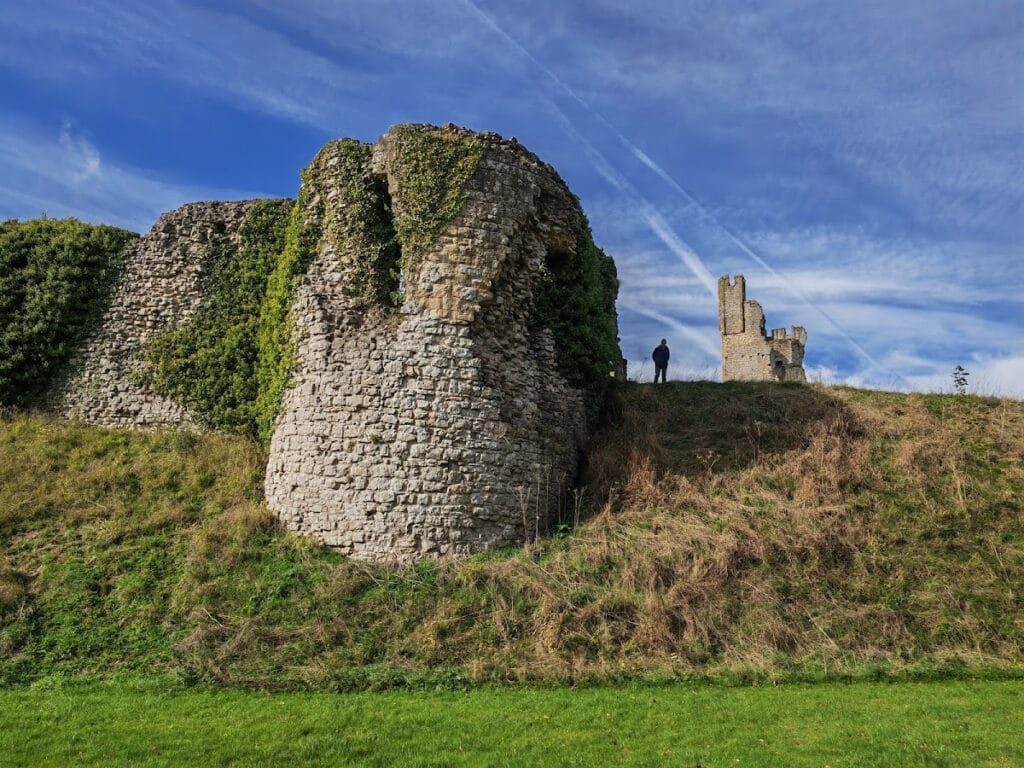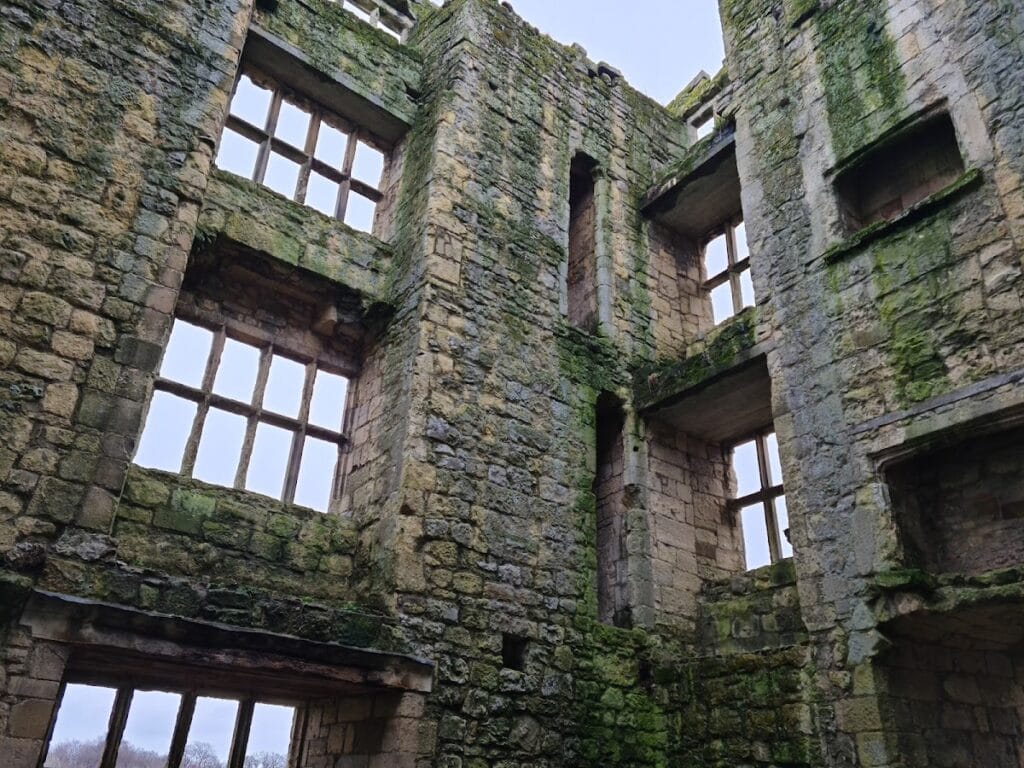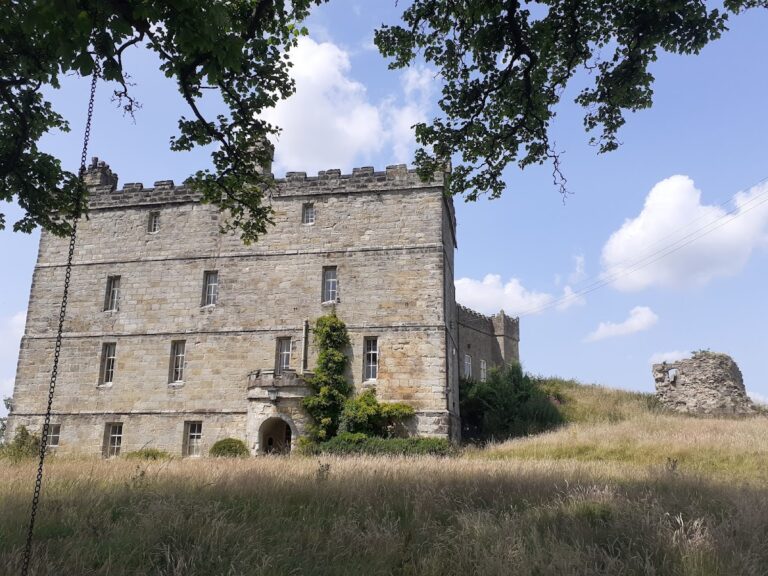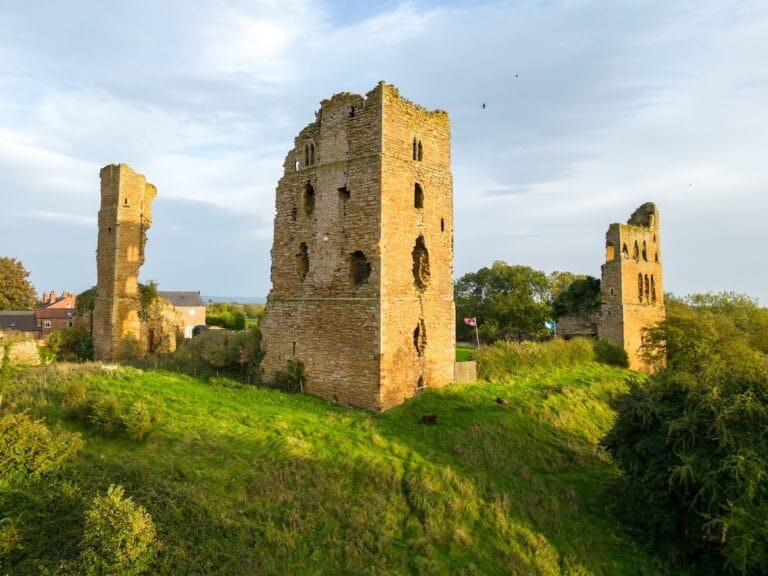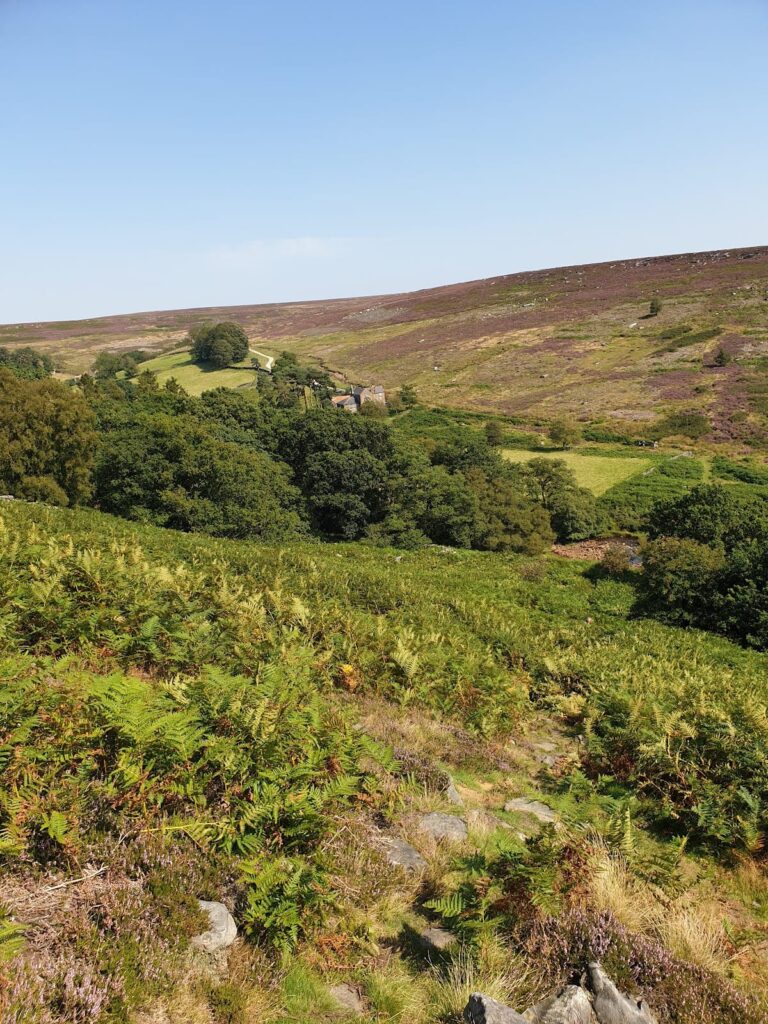Helmsley Castle: A Norman and Tudor Stronghold in England
Visitor Information
Google Rating: 4.5
Popularity: Medium
Google Maps: View on Google Maps
Official Website: www.english-heritage.org.uk
Country: United Kingdom
Civilization: Medieval European
Remains: Military
History
Helmsley Castle stands in the town of Helmsley, England, and was originally established by Norman settlers in the early 12th century. The site was first developed as a wooden fortification around 1120, linked to Walter l’Espec, a Norman lord who received the Helmsley estate following the Norman Conquest. Although Walter did not build the castle himself, he played a key role in the foundation of Rievaulx Abbey nearby, granting the land for the monastery before his death in the mid-12th century.
Following Walter l’Espec’s passing around 1153 or 1154 without heirs, the castle came into the possession of his sister, Adelina, through her marriage to Peter de Roos. By 1186, their son Robert de Ros initiated the transformation of Helmsley from a wooden fortress into a stone castle. His construction introduced two main towers, rounded corner towers, and a principal gateway on the southern side, marking the beginning of its long development as a stone stronghold.
The de Roos family retained ownership of the castle for nearly three centuries. During the early 13th century, under William de Ros, a chapel was built inside the castle courtyard. Later, between 1227 and 1285, a southern barbican was constructed. At some point in the mid-14th century, the east tower was likely raised for the visit of King Edward III in 1334. The castle’s inner layout evolved to separate administrative and domestic functions, with the northern half housing officials and the southern containing private quarters for the lord.
In 1478, Edmund de Roos sold Helmsley Castle to Richard, Duke of Gloucester, who later became King Richard III. Despite acquiring the castle, Richard preferred Middleham Castle and did not make changes to Helmsley. After Richard’s death at the Battle of Bosworth in 1485, King Henry VII restored the property to Edmund de Roos.
Ownership passed to the Manners family in 1508. Edward Manners, the grandson of Thomas Manners, Earl of Rutland, introduced significant Tudor-era modifications. These included converting the original hall into a mansion fitting Tudor tastes, turning the 13th-century chapel into a kitchen accessible via a covered gallery, and demolishing the newer hall. During this period, the south barbican was also adapted into a more comfortable residence, reflecting changing domestic needs.
The castle’s military importance resurfaced during the English Civil War in 1644. Sir Thomas Fairfax led a siege that lasted three months against the Royalist garrison commanded by Sir Jordan Crosland. Ultimately forced to surrender, the castle was ordered by Parliament to be slighted, a process involving deliberate damage to defensive structures. As a result, much of the walls, gates, and a portion of the east tower were destroyed, though the Tudor mansion was spared this fate.
Later, the castle came under the ownership of George Villiers, 2nd Duke of Buckingham, before being sold in 1695 to Charles Duncombe, a wealthy banker and politician. The Duncombe family focused on constructing a nearby country house, Duncombe Park, and allowed the castle to decline into a picturesque ruin during the 18th and 19th centuries.
In 1923, responsibility for the castle’s preservation passed to the government agency known as the Office of Works, now English Heritage. They undertook efforts to clear debris and trees from the site. During the Second World War, the castle’s earthworks were considered for use in anti-tank defenses, indicating the continuing strategic interest in the location. Today, the castle remains under the Duncombe family’s ownership but is managed for conservation and public interest by English Heritage.
Remains
Helmsley Castle features a rectangular inner bailey surrounded by double ditches, a layout that differs from the typical motte-and-bailey design common in Norman castles of the early medieval period. The castle is set on a natural rocky outcrop overlooking the nearby River Rye, which provided a defensive vantage point and natural protection.
Constructed initially of wood, the castle’s transformation into stone began in the late 12th century, resulting in the erection of robust features. Among these were two main towers and several round towers at the corners, built to strengthen the castle’s defenses. The principal gateway was positioned on the southern side, serving as the main entrance and likely fortified for protection and control of access.
Within the courtyard, a chapel dating to the mid-13th century was established during William de Ros’s time. Later architectural changes divided the castle’s interior space with a wall, creating two distinct halves. The southern section contained a newer hall and an east tower designated for the lord’s private use. The north half retained the older hall, which served administrative purposes for the steward and castle officials.
The south barbican, constructed between 1227 and 1285, originally functioned as a fortified outer gatehouse guarding the southern entrance. During the Tudor period, this space was converted into more comfortable living quarters, reflecting a shift from military to domestic use.
In the 14th century, the east tower was likely heightened to accommodate the visit of King Edward III in 1334, indicating its role in hosting royal guests. This modification would have enhanced the tower’s prominence and visibility within the castle complex.
Tudor-era renovations reimagined several parts of the castle, particularly the old hall, which was transformed into a mansion suited to Renaissance tastes. The 13th-century chapel was converted into a kitchen, linked to the mansion by a covered gallery that allowed sheltered access. Additionally, records from 1578 note timber being used to construct a gallery in the attic space of the mansion.
After the siege in 1644 and the subsequent parliamentary order to slight the castle, much of the defensive stonework was seriously damaged. Sections of the walls and gates were destroyed, and part of the east tower was demolished. However, the Tudor mansion escaped intentional damage and remains one of the best-preserved structures on the site.
The castle’s earthworks, including the ditches and bailey layout, are substantial and were recognized for their defensive potential even in the 20th century when plans considered their use as anti-tank barriers during World War II.
Today, the ruins of Helmsley Castle clearly reveal layers of medieval and Tudor construction, offering insight into its evolution from a Norman stronghold to a later country residence and military site. The castle remains a prominent feature on its rocky site above the River Rye, alongside the historic landscape that includes nearby Rievaulx Abbey.


